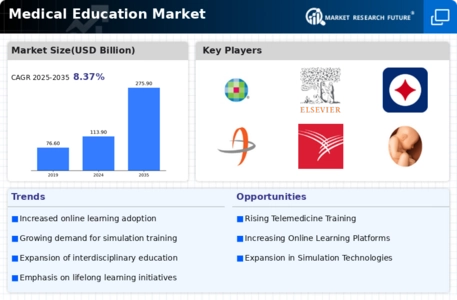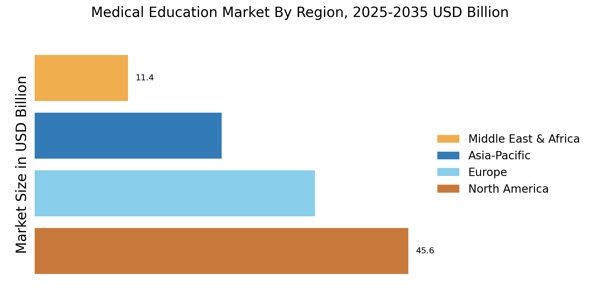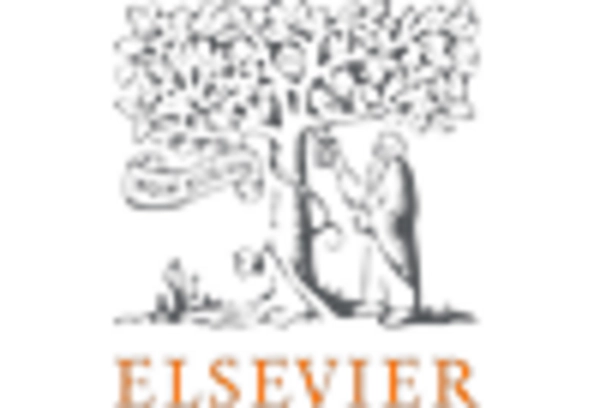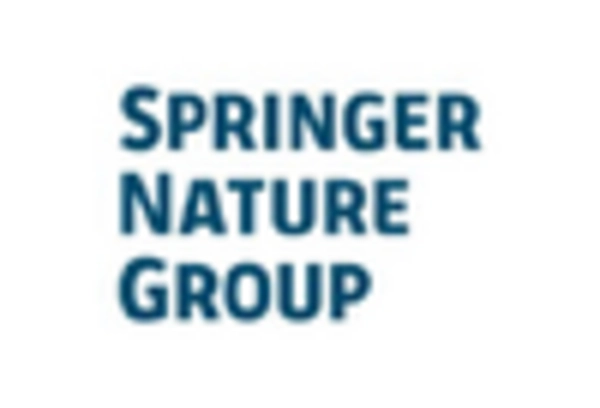Focus on Lifelong Learning
The Medical Education Market is increasingly emphasizing the importance of lifelong learning among healthcare professionals. As medical knowledge and technologies evolve rapidly, continuous education becomes essential for practitioners to maintain their competencies. Many healthcare organizations are now mandating ongoing training and certification for their staff, which drives demand for flexible and accessible educational options. This trend is reflected in the rise of online courses and modular training programs that cater to busy professionals. The shift towards lifelong learning not only enhances the skills of existing practitioners but also contributes to the overall advancement of the Medical Education Market.
Technological Advancements
The Medical Education Market is experiencing a surge in technological advancements that are reshaping educational methodologies. Innovations such as artificial intelligence, virtual reality, and augmented reality are being integrated into medical training programs. These technologies enhance the learning experience by providing immersive simulations and personalized learning paths. For instance, the use of virtual reality in surgical training allows students to practice procedures in a risk-free environment. According to recent data, the adoption of these technologies is projected to increase the efficiency of medical training by up to 30%. This trend indicates a shift towards more interactive and engaging educational formats, which could potentially attract a larger number of students to the medical field.
Interdisciplinary Collaboration
Interdisciplinary collaboration is emerging as a key driver in the Medical Education Market. As healthcare becomes more complex, the need for professionals to work across disciplines is increasingly recognized. Educational institutions are responding by developing programs that promote teamwork among medical, nursing, and allied health students. This collaborative approach not only prepares future healthcare providers to work effectively in diverse teams but also enhances patient care outcomes. Data indicates that interdisciplinary training can improve communication skills and reduce medical errors, thereby positively impacting the quality of healthcare delivery. This trend is likely to shape the future of the Medical Education Market, fostering a more integrated approach to medical training.
Regulatory Changes and Accreditation
Regulatory changes and accreditation standards play a pivotal role in the Medical Education Market. Governments and professional bodies are continuously updating their requirements to ensure that medical education meets the evolving needs of healthcare systems. For example, new accreditation standards may require institutions to incorporate more hands-on training and interprofessional collaboration into their programs. This shift not only enhances the quality of education but also aligns training with real-world healthcare practices. As a result, institutions that adapt to these changes may gain a competitive edge, potentially influencing enrollment rates and the overall growth of the Medical Education Market.
Increased Demand for Healthcare Professionals
The Medical Education Market is driven by a growing demand for healthcare professionals across various sectors. As populations age and chronic diseases become more prevalent, the need for qualified medical practitioners is escalating. Recent statistics suggest that the demand for physicians is expected to rise by 7% over the next decade. This increasing need compels educational institutions to expand their medical programs and enhance their curricula to produce more graduates. Furthermore, the emphasis on primary care and specialized fields is likely to influence the types of medical education offered, thereby shaping the overall landscape of the Medical Education Market.


















Leave a Comment